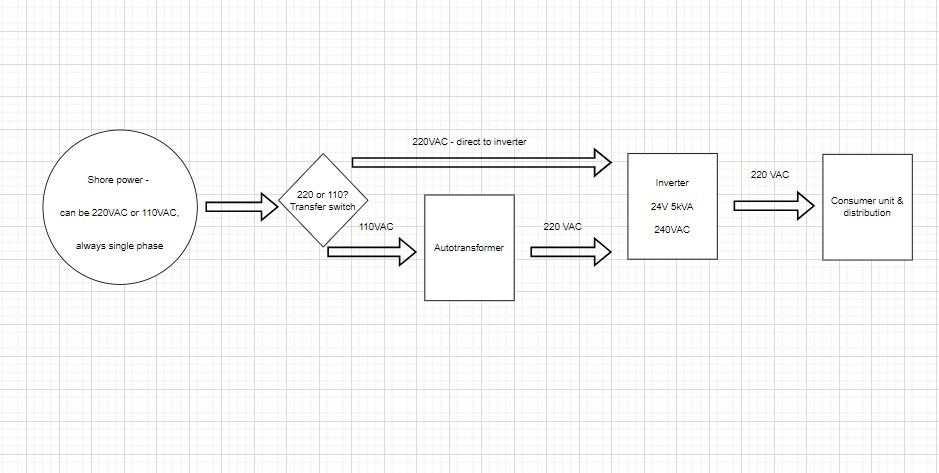Hi everyone,
I have a sailboat that is entirely wired for 220VAC (single phase), including all appliances aboard. I am currently in Europe.
In January I will cross the Atlantic and I want to be able to accept 110VAC (single phase) from the shore and step it up to 240VAC (single phase) for use aboard. Hence, I'm looking at an Autotransformer.
I'm trying to understand exactly how this device works.
(1) can I give it any voltage (110VAC or 220VAC) and have it always gracefully output 240VAC regardless of input voltage?
or,
(2) do I need to implement a transfer switch, so that when I am in a country with 240VAC I bypass the Autotransformer entirely?
I have studied the manual and believe it's the latter, but as we're talking about mains voltage I would appreciate the confirmation. Option two would be much less convenient because I also have a 220VAC generator and so I will regularly switch input voltages from 110VAC to 220VAC and back, and at some point I am sure to make a mistake and forget to operate the transfer switch...
Thank you! 
